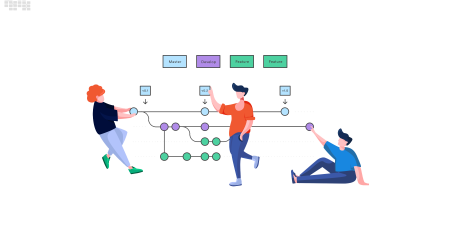Are your user stories suitable for remote teams?
You don’t need me to tell you that user stories are critical. They’re essential in the toolkit of any Product Owner or Manager. However, when people began working from home in droves at the onset of the Covid-19 lockdown, the function they play became even more important.
It’s more vital than ever to facilitate clear, positive dialogues that underpin seamless software delivery, especially with personnel from business and IT teams working remotely.
Are your user stories accomplishing their goals? Is it time to take a new look at why, when, and how they’re used in your company?
User stories: the why and when
When use cases or epics are broken down into well-crafted user stories, the company’s ability to streamline and speed software delivery improves.
Work is easier to visualize and understand when huge tasks are broken down into smaller portions that generate value on their own. Estimating and budgeting the time and resources needed to complete them becomes much easier right away.
The advantages of this strategy are numerous. Within a single Agile sprint or iteration, significant chunks of work can be accommodated. Product-focused, self-managing teams may make swift choices without relying on other departments or senior leaders. Because modifications are handled in discrete, separate portions, software delivery becomes intrinsically customer-focused, and progress is quick. It’s all about maximizing value while minimizing risk.
User stories are essential to one of the digital economy’s most important success factors: quick, incremental software upgrades that improve the user experience over time.
It appears to be simple. However, it’s all too easy to lose sight of the importance of simplicity. User stories can easily become an ineffective administrative burden if this happens. In that situation, it’s time to go back to the beginning and make sure that everyone involved in the production of user stories understands what they’re for.
This is especially critical right now, since many teams are working flexibly and remotely because to the Covid-19 pandemic. It’s critical that business and IT teams collaborate to communicate and capture software requirements as they arise.
In his blog Reflections on User Stories, product manager author Roman Pichler says:
The purpose is to encourage high-level talks that promote efficient collaboration between business and IT teams. It’s all about taking a ‘small and often’ approach to planning, with discussions centered on immediate needs to drive the development of product features that offer real value.
How to improve your user stories
A good user story is purposefully unclear. The idea is to spark discussion; it’s a springboard for a more in-depth discussion, not a requirement in and of itself.
It’s worth examining the core models underpinning your user stories if they’re getting bloated or not operating as they should:
The three Cs of user stories
The ‘Card, Conversation, Confirm’ formula aids in the production of user stories by bringing discipline to the process.
The sole tangible component is a tiny card (or Post-it note). Due to the restricted amount of space available, the information presented at the outset is concentrated and brief.
This brevity guarantees that the conversation between many stakeholders receives more attention. People must actively engage with one another to determine the specifics of what is required. This would best happen in person prior to Covid-19. In the current situation, it’s critical to keep the stage’s face-to-face component as much as feasible via video conferencing.
Formal confirmation and mutual agreement on what will be supplied when occurs only after the conversation is completed.
The INVEST model
Despite its modest size, a user story must be carefully developed to guarantee that it encourages focused and purposeful engagement. The essential criteria are summarized by the acronym INVEST:
- Independent
- Negotiable
- Valuable
- Estimable
- Small
- Testable
Every user story should be scrutinized to ensure that it meets all of these criteria.
The hamburger method
‘Independent’ is the one criterion that underpins all others. Any user story must be able to stand on its own and provide value. Iterative value delivery relies heavily on this. However, teams may have a tendency to resort to technical work divisions.
With his User Story Hamburger, Gojko Adzic has created an effective solution to this challenge. Every each tale or ‘bite’ contains all necessary elements and is of sufficient quality to avoid becoming unmanageable while still providing value. Simply put, each tale may have storage layer, user interface, and business logic components.
This method works very nicely because it is visual, and it gets people thinking about alternatives while still staying in their comfort zone. It also works nicely with ‘bite-size chunks’ analogies. And you can easily explain why releasing just a technical task doesn’t make sense because no sane person would eat only the lettuce.
Gojko Adzic
Get user stories right to boost WFH performance
Lockdown and extensive homeworking have uncovered user story issues for many organizations. Any flaws in the overall process were masked when everyone was in one place, with tangible story cards on show. The fractures are beginning to appear now that teams are relying on digital tickets, and many employees are working flexible hours to accommodate childcare or home schooling.
Is this anything you’ve heard before? Then you must seize the nettle. Discard your old user tale cards and start over. To ensure that each user narrative is compact and precisely formed, use the 3 Cs, apply the INVEST acronym, and refer to the hamburger approach.













Leave a Reply